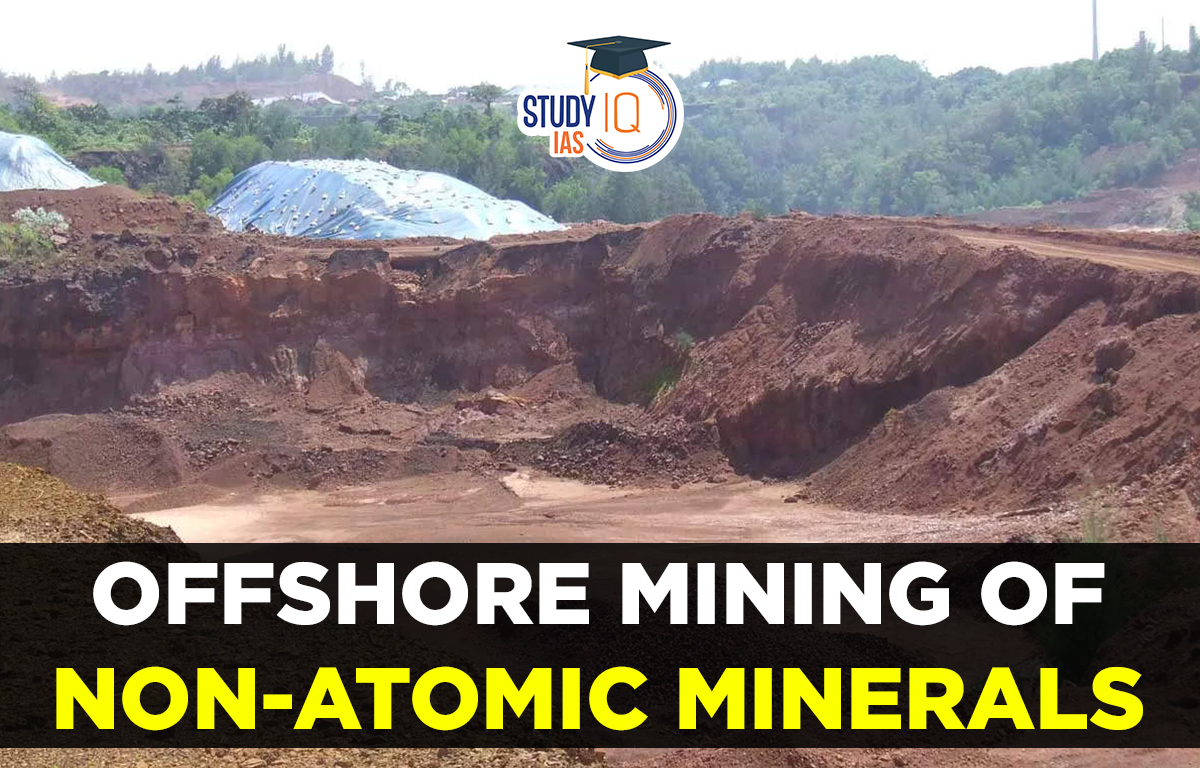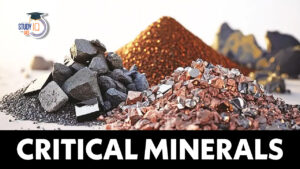Table of Contents
Context: The Kerala government and fishing communities are strongly opposing the Centre’s offshore mining plan due to its potential environmental and economic impacts.
What is Offshore Mining?
Offshore mining refers to the extraction of minerals and resources from underwater areas such as the continental shelf, exclusive economic zone (EEZ), and other maritime zones. These resources include:
- Polymetallic nodules (rich in manganese, nickel, cobalt and copper).
- Lime-mud & Construction-grade sand.
Offshore Areas Mineral (Development and Regulation) Act, 2002 (OAMDR Act)
- Regulates mining activities in India’s maritime zones.
- Earlier, offshore excavation was controlled by government bodies like: the Geological Survey of India (GSI), the Indian Bureau of Mining & Atomic Minerals Directorate
- 2023 Amendment:
- Allowed private sector participation through competitive auction.
- Opened offshore mining for minerals like polymetallic nodules, lime mud and sand.
Legal Framework and Jurisdiction Issues
- The OMDR Act defines “offshore areas” as territorial waters, continental shelf, EEZ and other maritime zones.
- Mining rights in offshore areas belong to the Union Government.
- Fishing rights up to 12 nautical miles are under state jurisdiction (as per the Seventh Schedule of the Indian Constitution).
- Union Mining Ministry’s Stand:
- The 3 proposed blocks off the Kollam coast are beyond 12 nautical miles, meaning they fall under Central jurisdiction and not under Kerala’s control.
| Key Offshore Mining Blocks and Reserves |
|
Concerns Raised by the Fishing Community & Environmentalists
- Impact on Marine Ecosystem and Fisheries:
- Kollam Parappu (Quilon Bank): One of the most productive fishing grounds on the southwest coast of India. Mining here could lead to a decline in marine fish catch.
- Effects of seabed mining:
- Clouding of water → Reduces light penetration, shrinking the euphotic zone (area with enough light for photosynthesis).
- Sediment plumes → Can travel thousands of square kilometres, affecting marine life.
- Release of toxic substances → Could poison fish and disrupt aquatic ecosystems.
- Impact on Fishermen’s Livelihoods:
- Fishing is the main livelihood for 11 lakh fishermen in 222 fishing villages across Kerala.
- Mining operations can reduce fish stocks & Introduce large mining vessels, which could disrupt fishing activities and pose safety risks.
- Economic Concerns: All mining royalties will go to the Central government, leaving no direct benefit for Kerala.
Stats IQ: India’s Offshore Mineral Resources
- India has a 7,517-km-long coastline and is home to nine coastal states and four union territories with 1,382 islands.
- India’s Exclusive Economic Zone (EEZ) of over two million square kilometres holds significant recoverable resources of crude oil and natural gas, construction sand, heavy minerals, lime mud, poly-metallic nodules and crust
- The Geological Survey of India (GSI) has estimated 79 million tonnes of heavy mineral resources; 1,53,996 million tonnes of lime mud in the Indian EEZ and 745 million tons of construction sand in the Territorial Water.
About the Offshore Area Mineral (Development & Regulation) Act, 2002 (OAMDR Act)
- In 2002, the Parliament passed the Offshore Areas Mineral (Development and Regulations) Act.
- This Act aims at the development and regulation of mineral resources on specific marine territories such as territorial waters, exclusive economic zones, continental shelves, and other maritime zones of India.
- However, the act officially came into effect on 15th January 2010, vide an order dated 11th February 2020 notified by the Central Government.
- The Act provides mandates for all minerals in offshore areas. Even minerals listed under the Atomic Energy Act, of 1962, are included in the said Act.
- However, it excludes oils and related hydrocarbons. Oils and hydrocarbons though are offshore minerals are dealt with under separate legislation.
- Current procedure for offshore mining: The government currently allocates offshore production leases for blocks containing higher grade atomic minerals, such as uranium and zircon to state controlled entities.


 Critical Minerals, Key Issues, Importanc...
Critical Minerals, Key Issues, Importanc...
 Grasslands in the World, Map, Types and ...
Grasslands in the World, Map, Types and ...
 Places in News for UPSC 2025 for Prelims...
Places in News for UPSC 2025 for Prelims...





















